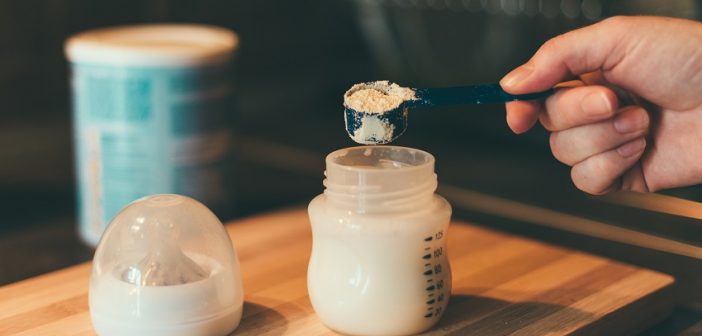Proper feeding of infants not only guarantees the harmonious development and growth of the baby but also lays the foundation for health and resistance to infectious diseases and unfavorable environmental factors.
Proper feeding of infants not only guarantees the harmonious development and growth of the baby but also lays the foundation for health and resistance to infectious diseases and unfavorable environmental factors. Mom’s milk is the best food for a baby, but sometimes, breast feeding alone is not enough.
Mixed Feeding of Newborns: Features of Baby Formula Feeding
Mixed feeding is a system of feeding newborns and babies when breastfeeding is combined with supplementary formula milk. At the same time, the percentage of the mixture in the child’s daily menu should not exceed 50%; otherwise, such feeding will be considered artificial.
A woman can supplement the baby with formula immediately after breast feeding or give breast milk in the morning and formula milk at lunchtime.
Benefits of Part-Time Nursing
Some mothers worry that baby formula supplementation will affect the baby’s immune system. Do not worry: the immune system of children develops regardless of the type of feeding. Of course, breast milk contains beneficial nutrients and antibodies that strengthen the baby’s health. And a kid fed only with breast milk will receive more of these substances than one on mixed feeding. But this will not affect the formation of immunity.
Mixed feeding is suitable for new mothers in the following cases:
- Insufficient weight gain of the baby
- Prematurity of the newborn
- If the mother is sick or takes medications incompatible with breast feeding
- Other life circumstances when a mother needs to combine motherhood with work, study, hobbies, etc.
The diet for mixed feeding is individual, and it depends, to a greater extent, on how much of the food the baby receives with breast milk and what part with the formula. The main rule is to offer the baby formula only after breast feeding.
How to Start Feeding with Formula?
There are several basic rules, the observance of which will make this process pleasant and easier for the baby and mother. Simple steps to follow:
- It is necessary to switch to bottle feeding of the baby only on the recommendation of the pediatrician, and this should be done smoothly.
- Observe the rules of hygiene and safety: the mixture, bottles, pacifiers must be sterile. The temperature of the finished mixture should be no more than 37 to 38°C.
- Apply the baby first to one breast, then to the second, and only then give the mixture. Otherwise, lactation will decrease: the mother’s body will begin to produce only the amount of milk that the baby receives from one breast.
- Observe the diet. The most optimal is a free feeding regimen. But it is possible to feed the baby according to the schedule, in which case, the frequency of feeding can be reduced by one feeding in comparison with natural feeding.
Mixed Feeding: How Much Formula?
The correct calculation of the amount of the baby formula when alternating between natural and artificial feeding depends on how much the child should eat per day. To begin with, you should determine how much food is required at one time: divide the daily food volume by the number of feedings per day. With the help of control weighing before and after feeding, moms can determine how much breast milk the baby receives and how much feeding is needed to get the norm.
Does Supplementing with Formula Reduce the Benefits of Breastfeeding?
The immunity of infants develops independently of the type of feeding. Of course, mother’s milk contains antibodies and beneficial substances that enhance the immunity of the baby. With a reduced proportion of breast milk on mixed feeding, the child will receive less of these substances than on breastfeeding. But this does not apply to the formation of immunity, and the child’s immunity will not suffer from bottle feeding. Therefore, if the process of formula feeding is approached rationally, the benefits of breastfeeding will not decrease.
If there is an insufficient amount or absence of breast milk, milk formulas are introduced into the nutrition of children. State-of-the-art, highly adapted infant formula offered by Organic Best Shop provides your baby with more than just all the nutrients needed for optimal growth and development. Many mixtures from the assortment contain many functional components that have a positive effect on the composition of the intestinal microbiota of the child and help to build up your child’s immunity.
How Do You Combine Breast Milk and Formula?
Even if you decide that you will introduce formula supplementation into your baby’s feeding, it is best to start exclusively with breast milk. Your baby will learn how to feed on breast milk, and your body will adjust to your baby’s needs. In the future, it will be much easier for you to reduce your milk production if you choose to combine breastfeeding with formula feeding.
As new information appears on the composition of breast milk and the functional properties of its ingredients, the composition of formula milk for mixed and artificial feeding is changing; they are increasingly approaching human milk in their composition and properties.




